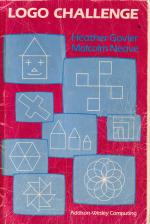Other Reviews Of Picture Logic For The Spectrum 16K/48K/BBC A/BBC B/Electron
Picture Logic (Addison-Wesley)
Less than Logo
Picture Logic (Addison-Wesley)
A review by Rosetta McLeod (Crash)
Zapping Your Graphics
ZX looks at some utilities that can help put some life into your graphics displays


 1st July 1985
1st July 1985
